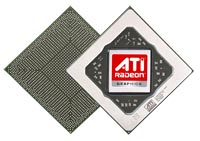
Just prior to the Radeon HD 2000 series' introduction, numerous rumors circulated regarding an ultra-high clocked ATI R600-based video card, that featured a large 1GB frame buffer. Some went so far as to say the GPU would be clocked at or near 1GHz. Spy shots even cropped up on the web showing the card in all its glory. But sometime between then and the official launch, news of the card fizzled and when the R600 arrived in the form of the ATI Radeon HD 2900 XT, it was outfitted with “only” 512MB of frame buffer memory and its GPU core and memory clock speeds, while somewhat high, didn’t come close to the numbers put forth in those early rumors.
Some of AMD’s partners, however, have since decided to introduce R600-based products that show there was actually some truth to the stories that circulated early on. The product we’re going to show you here today for example, the Diamond Viper HD 2900 XT 1GB, is based on the R600 GPU, but as its name implies the card features not 512MB of frame buffer memory but a full 1GB. The memory on the card is also clocked higher than AMD’s reference ATI Radeon HD 2900 XT’s at 1GHz (2GHz DDR). The GPU clock remains at 742MHz, however.
We got our hands on a pair of these 1GB monsters and have compared their performance to the original 512MB Radeon HD 2900 XT, and a trio of GeForce 8800 series cards, all running in both single- and multi-GPU CrossFire and SLI configurations with some interesting results.


|

|
|
ATI Radeon HD 2900 XT
|
|
Features & Specifications
|
|
|
700 million transistors on 80nm HS fabrication process
512-bit 8-channel GDD4 memory interface
Ring Bus Memory Controller
-
Fully distributed design with 1024-bit internal ring bus for memory reads and writes
-
Optimized for high performance HDR (High Dynamic Range) rendering at high display resolutions
Unified Superscalar Shader Architecture
-
320 stream processing units
-
Dynamic load balancing and resource allocation for vertex, geometry, and pixel shaders
-
Common instruction set and texture unit access supported for all types of shaders
-
Dedicated branch execution units and texture address processors
-
128-bit floating point precision for all operations
-
Command processor for reduced CPU overhead
-
Shader instruction and constant caches
-
Up to 80 texture fetches per clock cycle
-
Up to 128 textures per pixel
-
Fully associative multi-level texture cache design
-
DXTC and 3Dc+ texture compression
-
High resolution texture support (up to 8192 x 8192)
-
Fully associative texture Z/stencil cache designs
-
Double-sided hierarchical Z/stencil buffer
-
Early Z test, Re-Z, Z Range optimization, and Fast Z Clear
-
Lossless Z & stencil compression (up to 128:1)
-
Lossless color compression (up to 8:1)
-
8 render targets (MRTs) with anti-aliasing support
-
Physics processing support
Full support for Microsoft DirectX 10.0
-
Shader Model 4.0
-
Geometry Shaders
-
Stream Output
-
Integer and Bitwise Operations
-
Alpha to Coverage
-
Constant Buffers
-
State Objects
-
Texture Arrays
Dynamic Geometry Acceleration
-
High performance vertex cache
-
Programmable tessellation unit
-
Accelerated geometry shader path for geometry amplification
-
Memory read/write cache for improved stream output performance
Anti-aliasing features
-
Multi-sample anti-aliasing (up to 8 samples per pixel)
-
Up to 24x Custom Filter Anti-Aliasing (CFAA) for improved quality
-
Adaptive super-sampling and multi-sampling
-
Temporal anti-aliasing
-
Gamma correct
-
Super AA (CrossFire configurations only)
-
All anti-aliasing features compatible with HDR rendering
CrossFire Multi-GPU Technology
-
Scale up rendering performance and image quality with 2 or more GPUs
-
Integrated compositing engine
-
High performance dual channel interconnect
|
Texture filtering features
-
2x/4x/8x/16x high quality adaptive anisotropic filtering modes (up to 128 taps per pixel)
-
128-bit floating point HDR texture filtering
-
Bicubic filtering
-
sRGB filtering (gamma/degamma)
-
Percentage Closer Filtering (PCF)
-
Depth & stencil texture (DST) format support
-
Shared exponent HDR (RGBE 9:9:9:5) texture format support
ATI Avivo HD Video and Display Platform
-
Two independent display controllers
-
Drive two displays simultaneously with independent resolutions, refresh rates, color controls and video overlays for each display
-
Full 30-bit display processing
-
Programmable piecewise linear gamma correction, color correction, and color space conversion
-
Spatial/temporal dithering provides 30-bit color quality on 24-bit and 18-bit displays
-
High quality pre- and post-scaling engines, with underscan support for all display outputs
-
Content-adaptive de-flicker filtering for interlaced displays
-
Fast, glitch-free mode switching
-
Hardware cursor
-
Two integrated dual-link DVI display outputs
-
Each supports 18-, 24-, and 30-bit digital displays at all resolutions up to 1920x1200 (single-link DVI) or 2560x1600 (dual-link DVI)
-
Each includes a dual-link HDCP encoder with on-chip key storage for high resolution playback of protected content
-
Two integrated 400 MHz 30-bit RAMDACs
-
Each supports analog displays connected by VGA at all resolutions up to 2048x1536
-
HDMI output support
-
Supports all display resolutions up to 1920x1080
-
Integrated HD audio controller with multi-channel (5.1) AC3 support, enabling a plug-and-play cable-less audio solution
-
Integrated Xilleon HDTV encoder
-
Provides high quality analog TV output (component / S-video / composite)
-
Supports SDTV and HDTV resolutions
-
Underscan and overscan compensation
-
HD decode for H.264/AVC, VC-1, DivX and MPEG-2 video formats
-
Flawless DVD, HD DVD, and Blu-Ray playback
-
Motion compensation and IDCT (Inverse Discrete Cosine Transformation)
-
HD video processing
-
Advanced vector adaptive per-pixel de-interlacing
-
De-blocking and noise reduction filtering
-
Edge enhancement
-
Inverse telecine (2:2 and 3:2 pull-down correction)
-
Bad edit correction
-
High fidelity gamma correction, color correction, color space conversion, and scaling
-
MPEG-2, MPEG-4, DivX, WMV9, VC-1, and H.264/AVC encoding and transcoding
-
Seamless integration of pixel shaders with video in real time
-
VGA mode support on all display outputs
PCI Express x16 bus interface
OpenGL 2.0 support

|


Diamond bundles their Viper HD 2900 XT 1GB with a typical assortment of accessories for an HD 2000 series graphics card. Included with the Viper were two DVI-to-VGA adapters, a single DVI-to-HDMI w/ audio adapter, component video output cables, a ViVo dongle with S-Video and composite inputs and outputs, and a single CrossFire bridge connector. In addition to these items we also found a driver CD and some basic documentation. Finally, there was also a coupon for Valve’s Black Box gaming bundle (now called Orange box) that features Half Life 2: Episode 2, Team Fortress 2, and Portal. And unlike the original HL2 / Radeon bundle, Orange box isn’t going to take forever to arrive. In fact, news broke recently that it has gone gold and should be available soon.








